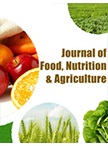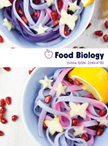Agriculture and Food Security in Mozambique
DOI:
https://doi.org/10.21839/jfna.v1i1.121Keywords:
Agriculture, nutrition, food security, povertyAbstract
The objective of this short review is to contribute to the debate on the role of agriculture transformation in the development process and as an engine to reduce poverty and improve general wellbeing through better access to nutrients in Mozambique. Agricultural services are organized by Provinces but still there is no accurate data on food production, consumption and trade trends in a large sample. It is recognized the complexity of the food security concept and the need of a multidimensional definition and approach. The increase in agricultural productivity can probably be seen as a necessary but not a sufficient condition to achieve long term food security in Mozambique or Sub-Saharan Africa. Competing views about the relevance of agriculture for growth and development imply different policy priorities in Africa.
Downloads
References
African Economic Outlook. (2017). Doi. http://dx.doi.org/10.1787/aeo-2017-en
AGRA. (2016). Africa Agriculture Status Report. Progress towards Agricultural Transformation in Africa. Retrieved from https://agra.org/aasr2016/public/assr.pdf
Bank of Mozambique. (2017). Macroeconomic Situation - Annual Report 2016, Mozambique
Barnes, J.I., Meisfjord, J., Dugan, P.J. & Jamu, D.M. (2002). Inland fisheries in Mozambique: importance and potential. World Fish Center. Retrieved from http://www.the-eis.com/data/literature/jwwREPFisheries%20FINAL%20WorldFish.pdf
Castel-Branco, C.N., Massingue, N. & Muianga, C. (2015). Questions on productive development in Mozambique. Retrieved from http://www.iese.ac.mz/lib/publication/livros/IESE_FAN_EN.pdf
Chauvin, N.P., Mulangu, F, & Porto, G. (2012). Food production and consumption trends in sub-saharan Africa: Prospects for the transformation of the agricultural sector. UNDP, Regional Bureau for Africa.
Christiansen, L., Demery, L. and Kuhl, J. (2010). The (Evolving) Role of Agriculture in Poverty Reduction: An Empirical Perspective. World Institute for Development Economics Research, United Nations University. Working Paper No. 2010/36.
Deloitte. (2016). Mozambique’s Economic Outlook: Governance challenges holding back economic potential. December 2016. Retrieved from https://www.deloitte.com
Dercon, S. & El Beyrouty, K. (2009). The Role of Agriculture in Growth Revisited for Africa. The International Growth Centre. Retrieved from https://www.theigc.org
FAO (2007b). Workshop for Sub-Saharan.Improving tenure security for the rural poor. Mozambique – country case study. Simon Norfolk & Christopher Tanner. Retrieved from http://www.fao.org/3/a-k0786e.pdf
FAO, IFAD and WFP. (2015). The State of Food Insecurity in the World 2015. Meeting the 2015 international hunger targets: taking stock of uneven progress. Rome, FAO.
FAO. (2007a). Promoting integrated and diversified horticulture production in maputo green zones towards a stable food security system. Retrieved from http://www.fao.org/fileadmin/templates/tc/tce/pdf/Mozambique_factsheet.pdf
FAO. (2010). Agriculture and Consumer Protection Department – Nutrition Country profiles. Retrieved from http://www.fao.org/ag/agn/nutrition/moz_en.stm
FAO. (2013). Country Programme Frame work. Retrieved from www.fao.org/world/mozambique
FAOSTAT, (2017). Retrieved from http://www.fao.org/ faostat/en/ on 17/11/2017
Haglund, D. (2011). Blessing or curse? The rise of mineral dependence among low- and middle-income countries. Oxford Policy Management (OPM). Retrieved from http://www.eisourcebook.org/
HRW. (2013). Mozambique: Mining Resettlements Disrupt Food, Water. Retrieved from https://www.hrw.org/news/2013/05/23/mozambique-mining-resettlements-disrupt-food-water.
IMF. (2017). World Economic Outlook Data. International Monetary Fund. Retrieved from https://www.imf.org/external/pubs/ft/weo/2017/01/weodata/index.aspx
Karl, T. (2007). Oil-Led Development: Social, Political, and Economic Consequences. Centre on Democracy, Development, and the rule of law. Freeman Spogli Institute for International Studies. Stanford University. Retrieved from http://cddrl.stanford.edu
Makino, K. (2013). Boosting Sustainable Agriculture Growth in Sub-Saharan Africa. In: For Inclusive and Dynamic Development in Sub-Saharan Africa. JICA Research Institute. Tokyo, 73-98.
McCullough, E.B. (2017). Labor productivity and employment gaps in Sub-Saharan Africa. Food Policy, 67, 133–152.
MINAG. (2012). Plano Estratégico para o Desenvolvimento Agrário (PEDSA), 2010-2019. Maputo. Moçambique.
Moyo, J.M., Bah, E-H. M., & Verdier-Chouchane, A. (2015). Transforming Africa’s agriculture to improve competitiveness. Africa Competitiveness Report 2015. African Development Bank.
Mozambique’s National Statistics Institute. (2017). Census activity in Mozambique. Retrieved from www.ine.gov.mz
Muzari, W. (2016). Agricultural Productivity and Food Security in Sub-Saharan Africa. International Journal of Science and Research, 5(1), 1769-1776.
PARP. (2014). Plano de Acção para Redução de Pobreza (PARP) 2011-2014. Present Condition and issues of the Agriculture in the Study Area. Support of Agriculture Development Master Plan for Nacala Corridor in Mozambique. Retrieved from https://www.farmlandgrab.org/uploads/attachment/ITR(1)%20Chap-3-eng.pdf
Pienaar, A.E. (2015). Prevalence of overweight and obesity among primary school children in a developing country: NW-CHILD longitudinal data of 6–9-yr-old children in South Africa. BMC Obesity, 2: 2.
Taglioni, D., & Winkler, D. (2016). Making Global Value Chains Work for Development. World Bank Washington D.C.
Trading Economics. (2017). Retrieved from https://tradingeconomics.com/mozambique/gdp-growth
UNCTAD. (2008). Linking African Small Producers to Large Distribution Networks—Enhancing Capacity of Mozambican Producers to Supply the South African Market, United Nations Conference on Trade and Development. UNCTAD/DITC/COM/2006/17
UNICEF. (2014). Situation Analysis of Children in Mozambique 2014. Retrieved from http://sitan.unicef.org.mz/
UNICEF. (2016). Multiple Indicator Cluster Surveys. Retrieved from http://search.worldbank.org/data?qterm=Mozambique
USAID. (2017). Agriculture and Food Security. Retrieved from https://www.usaid.gov/mozambique/agriculture-and-food-security
USDA. (2015). Mozambique: Agricultural Economic Fact Sheet. Retrieved fromhttps://www.fas.usda.gov/data/mozambique-agricultural-economic-fact-sheet
Van den Boom, B. (2011). Analysis of poverty in Mozambique. Household poverty status, child malnutrition and other indicators 1997, 2003, 2009. Centre for World Food Studies, VU University, Amsterdam. The Netherlands.
Voortman, R. (2013). Why the Green Revolution Failed in Sub-Saharan Africa. Rural 21. Retrieved from http://www.rural21.com/english/news/detail/article/why-the-green-revolution-failed-in-sub-saharan-africa-0000822/
World Bank. (2008). World development report 2008: Agriculture for development. Washington, DC
World Bank. (2015). World Development Indicators. Washington, DC: World Bank. Retrieved from www.databank.worldbank.org on 17/11/2017.
World Bank. (2016). Accelerating Poverty Reduction in Mozambique: Challenges and Opportunities. Retrieved from http://www.worldbank.org/en/country/mozambique/publication/accelerating-poverty-reduction-in-mozambique-challenges-and-opportunities
World Bank. (2017). World Development Indicators: World Bank, Washington, DC. Retrieved from www.databank.worldbank.org
World Economic Forum. (2017).The Inclusive Growth and Development Report 2017. Retrieved from http://www3.weforum.org/docs/WEF_Forum_IncGrwth_2017.pdf






 .
.